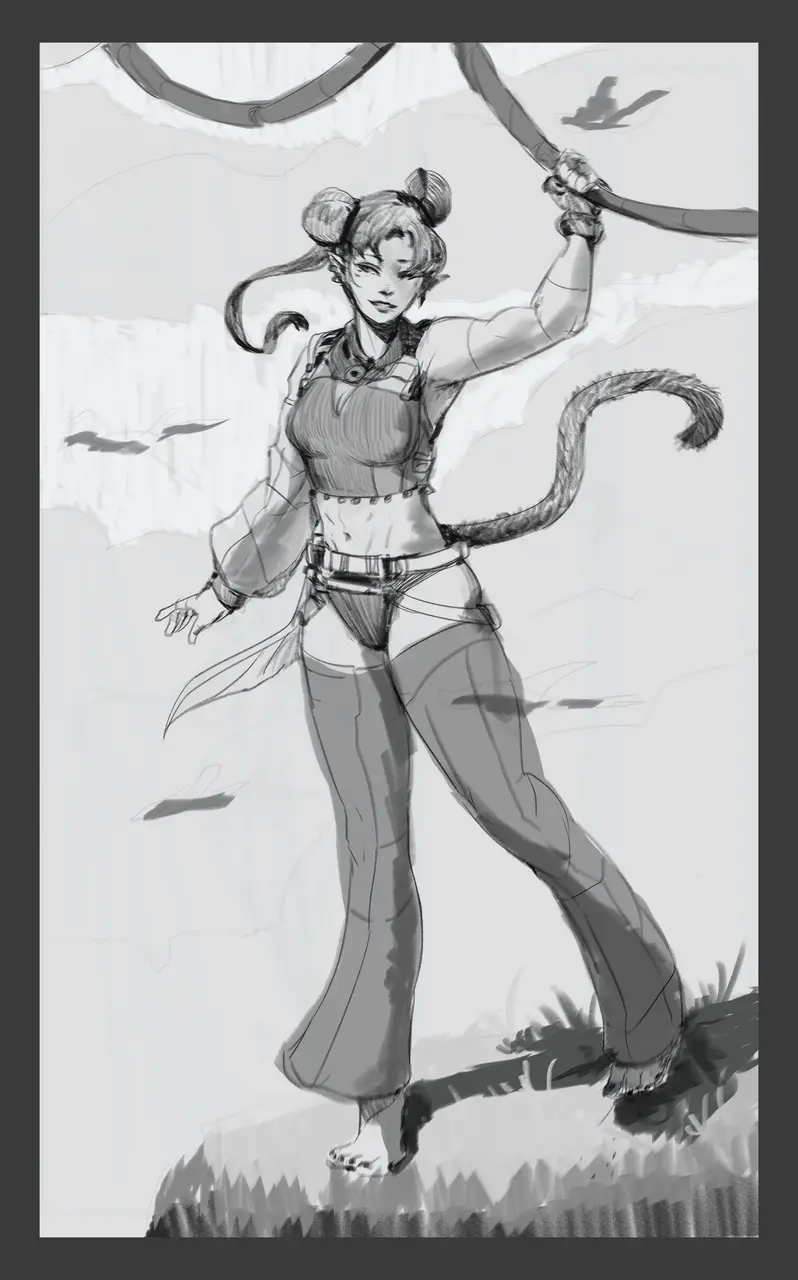From Stick Figures to Stunning Portraits: Your Journey in Learning to Draw
Introduction to drawing
Drawing is a skill that anyone can learn with practice and dedication. Whether you're a beginner or looking to improve your skills, understanding the basics of drawing is essential. Here are some key points to kickstart your journey into the world of drawing:
Drawing is not just about talent, but also about practice and learning techniques.
Anyone can learn to draw, regardless of age or previous experience.
Start by mastering the basic shapes and lines before moving on to more complex drawings.
Experiment with different mediums such as pencils, charcoal, or pastels to find what works best for you.
So, grab your sketchbook and pencil, and let's start this exciting journey into the world of drawing!
Basics of stick figure drawing
Drawing stick figures is a simple way to start your journey in learning to draw. Stick figures are the most basic form of drawing people, consisting of just lines and circles to represent the body's parts. Here are some key points to keep in mind when drawing stick figures:
Start with a central line to represent the spine.
Add lines for the arms and legs, keeping them simple and straight.
Use circles for the head and joints to maintain proportions.
Experiment with different poses and gestures to practice your creativity.
Advancing from stick figures
When advancing from stick figures in drawing, practice is key. Start by adding basic shapes to your figures, like circles and squares, to create more defined body parts. Explore shading techniques to add depth and dimension to your drawings. Study anatomy to understand how the human body is structured, which will help you create more realistic figures. Experiment with different mediums such as pencils, markers, and charcoal to find what works best for you. Don't be afraid to make mistakes, as they are part of the learning process. Practice regularly and seek feedback to improve your skills.
Understanding proportions in drawing
Pay attention to proportions when drawing to ensure your creations look realistic. Proportions refer to the size relationships between different elements in your drawing. To achieve accurate proportions, measure and compare the sizes of various parts of your subject. Start by breaking down complex shapes into simpler ones to grasp the proportions correctly. You can also use techniques like the "head measurement" method, where the size of the head sets the scale for the rest of the body. Experiment with different approaches to find what works best for you.
Exploring different drawing techniques
When you start learning to draw, you'll come across various drawing techniques that can help you improve your skills. Experimenting with different techniques like shading, perspective, and texture can enhance your drawings and make them more realistic. Each technique offers a unique way to add depth and detail to your artwork, allowing you to express your creativity in new and exciting ways. By exploring these techniques, you can discover what works best for you and develop your own style as an artist.
Adding details and depth to your drawings
When you add details and depth to your drawings, you bring them to life. Details can include things like textures, small features, or intricate patterns that make your drawing more realistic. Depth gives your drawings a sense of space and dimension, making them look three-dimensional. To add details, observe the object closely and notice its unique characteristics. Use shading techniques to create depth, such as hatching, cross-hatching, or blending. Experiment with different pencils and tools to achieve the desired effect. Remember, practice is key to mastering the art of adding details and depth to your drawings.
Developing your own drawing style
To develop your own drawing style, start by studying different artists you admire. Look at how they use lines, shapes, and colors to express their ideas. Experiment with different techniques and materials to find what works best for you. Practice regularly to refine your skills and express your unique perspective. Remember, developing a style is a journey that takes time and practice, so enjoy the process and don't be afraid to make mistakes along the way.
Tools and materials for drawing
To start drawing, you will need some essential tools and materials. Here are some common items you will need to get started:
Pencils: Get a set of drawing pencils with different grades for shading and detailing.
Paper: Invest in quality drawing paper to practice your sketches and drawings.
Eraser: Having a good eraser is crucial for correcting mistakes in your artwork.
Sharpener: Keep your pencils sharp for precise lines and details.
Sketchbook: A handy sketchbook allows you to draw on the go and keep all your creations in one place.
Reference images: Use pictures or real-life objects to inspire and guide your drawings.
Drawing tutorials or books: Learn techniques and tips from instructional materials to improve your skills.
Tips for improving your drawing skills
To improve your drawing skills, practice regularly. Set aside dedicated time each day to sketch and experiment with different techniques. Seek feedback from experienced artists to identify areas for growth. Study the work of artists you admire to learn new styles and approaches. Experiment with different mediums and subjects to expand your artistic range. Remember, the key to improving is persistence and a willingness to learn from both successes and mistakes.
Summary and next steps
Now that you've learned the basics of drawing, it's time to start practicing more complex techniques and styles. Keep experimenting with different subjects and mediums to improve your skills further. Consider enrolling in online courses or joining art classes to receive guidance and feedback from professionals. Don't be afraid to make mistakes; they can be a valuable learning experience. Remember, every artist started from stick figures! Keep practicing, stay inspired, and enjoy the journey of discovering your unique artistic style.


